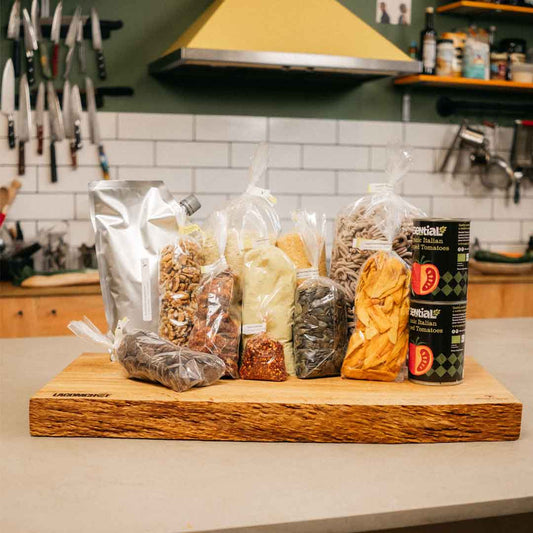
Food Packaging & Hygiene
Nicky NewtonHere at Zero Waste Bulk Foods, one of our goals is to reduce the amount of plastic in the supply chain. We buy food in bulk from our UK partners (who source globally in even larger bulk quantities) and also from local suppliers. We then place all of our products in airtight containers and store in clean, cool and dry facilities.
How We Store Food Safely
Each product is stored in its original packaging, sealed with a high grade, commercial sealing clip then placed into airtight containers. So, you can be sure that the products you receive are of good quality!
Every food containing an allergen is stored in a separate container and we ensure that the food scoops used are only used once before being cleaned at a high temperature.
Packing To Order
When an order is placed, we weigh each product being purchased and then place either into a brown paper bag or a natureflex plant based (not plastic!) bag.
The natureflex bags are used for products that may leak oils or juice, such as dried fruits, nuts, coffee etc.
We then place a sticker containing all of the information you would expect to see on a product if you purchased from a shop.
We are able to monitor stock turnover very closely and although we buy in bulk, we buy small amounts of each product in bulk to ensure that products are turned over well before their best before date.
If any products did come close to their best before date, they would be offered at a discounted price due to best before date approaching.
Food Hygiene Rating
Zero Waste Bulk Foods received a Food Hygiene rating of 5 in October 2019 - which is the highest rating possible and means that we fully comply with the law.
Our premises were inspected by a food safety officer from our local authority to check that we follow food hygiene law and that the food that we package and sell is safe to eat.
They looked closely at how we handle food, how we store food, how we prepare food, how clean our facilities are and how we manage food safety.



